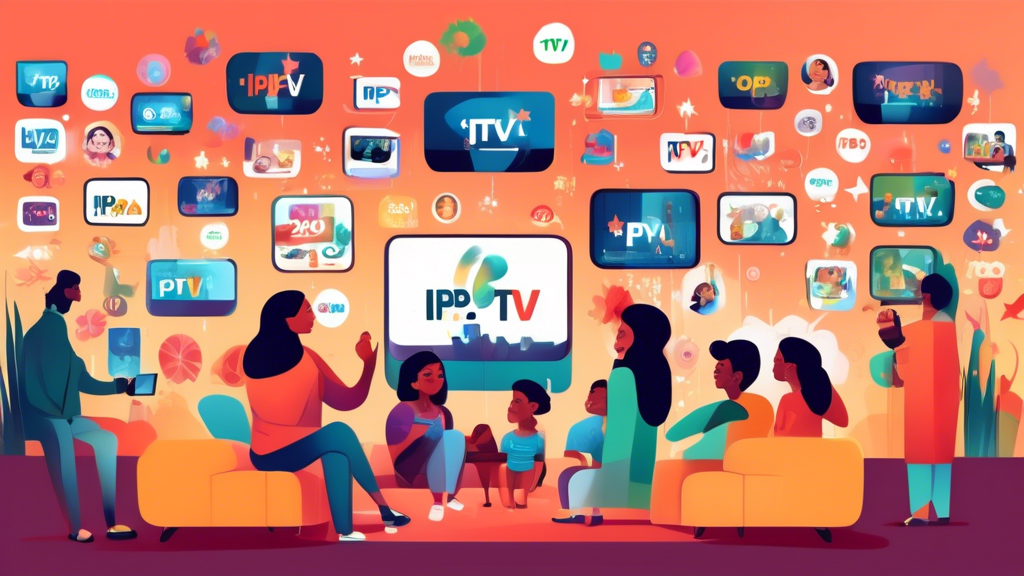Introduction
In today’s digital age, the way we consume television has undergone a remarkable transformation. Gone are the days of limited channel selections and rigid broadcast schedules. Instead, we find ourselves immersed in a world of endless possibilities, where Internet Protocol Television (IPTV) reigns supreme. But what exactly is IPTV, and how does it shape the modern television landscape? Let’s embark on a journey to explore the intricacies of this innovative technology and its profound impact on our viewing experience.
Navigating the IPTV Revolution: A Guide to Modern Television
In an era defined by technological innovation and digital connectivity, Internet Protocol Television (IPTV) emerges as a transformative force in the realm of television. With its promise of enhanced flexibility, on-demand access, and interactive features, IPTV revolutionizes the way we consume and engage with television content. As viewers navigate this evolving landscape, understanding the fundamentals of IPTV and its impact on modern television is essential. From unraveling the basics of IPTV technology to exploring its advantages and navigating potential challenges, this comprehensive guide provides invaluable insights for anyone seeking to embrace the IPTV revolution.
Understanding IPTV: Unraveling the Basics
- What is IPTV?: Internet Protocol Television, or IPTV, is a method of delivering television content over the internet protocol (IP) networks. Unlike traditional broadcast or cable television, which relies on dedicated infrastructure, IPTV utilizes internet connectivity to transmit audiovisual content to viewers’ screens.
- How Does IPTV Work?: IPTV operates through the use of specialized software and protocols that facilitate the delivery of multimedia content in real-time. This content is typically encoded into IP packets and transmitted via internet protocols, such as HTTP or RTP, to the viewer’s device, where it is decoded and displayed on the screen.
- Key Components of IPTV: The IPTV ecosystem comprises several key components, including content delivery networks (CDNs), middleware platforms, streaming servers, and user-end devices (e.g., smart TVs, set-top boxes, mobile devices). Each component plays a crucial role in ensuring the seamless delivery of content to the viewer.
The Advantages of IPTV: Unlocking a World of Possibilities
- Enhanced Flexibility: One of the primary advantages of IPTV is its unparalleled flexibility. Viewers have the freedom to watch their favorite content anytime, anywhere, and on any device with an internet connection. This flexibility eliminates the constraints of traditional broadcast schedules, allowing individuals to tailor their viewing experience to their preferences and lifestyle.
- On-Demand Content: IPTV offers access to a vast library of on-demand content, including movies, TV shows, documentaries, and more. Unlike traditional television services, which limit viewers to predetermined programming schedules, IPTV allows users to choose what they want to watch, when they want to watch it, with the click of a button.
- Interactive Features: Many IPTV services come equipped with interactive features that enhance the viewing experience. From interactive program guides and customizable playlists to on-screen chat and social media integration, these features add a new dimension of engagement and interactivity to the television viewing experience.
Navigating the IPTV Landscape: Considerations and Challenges
- Quality of Service: Ensuring consistent quality of service is essential for a seamless IPTV experience. Factors such as internet bandwidth, network congestion, and server reliability can impact the quality of content delivery. Providers must invest in robust infrastructure and technologies to maintain high standards of service.
- Content Licensing and Copyright: Securing licensing agreements and complying with copyright regulations are paramount for IPTV providers. Unauthorized distribution of copyrighted content can lead to legal ramifications and tarnish the reputation of the service. Providers must work closely with content creators and rights holders to ensure legal compliance and protect intellectual property rights.
Conclusion
IPTV represents the future of television, offering unparalleled flexibility, on-demand access, and interactive features that redefine the viewing experience. By leveraging internet connectivity and cutting-edge technologies, IPTV empowers viewers with a wealth of content choices and customization options. As the IPTV landscape continues to evolve, it’s clear that the possibilities are limitless. Whether you’re a casual viewer or a die-hard enthusiast, IPTV opens the door to a world of entertainment possibilities, all at your fingertips. So why wait? Embrace the future of television with IPTV and unlock a new era of viewing pleasure. Click here to check out our subscription plans and start your IPTV journey now!


